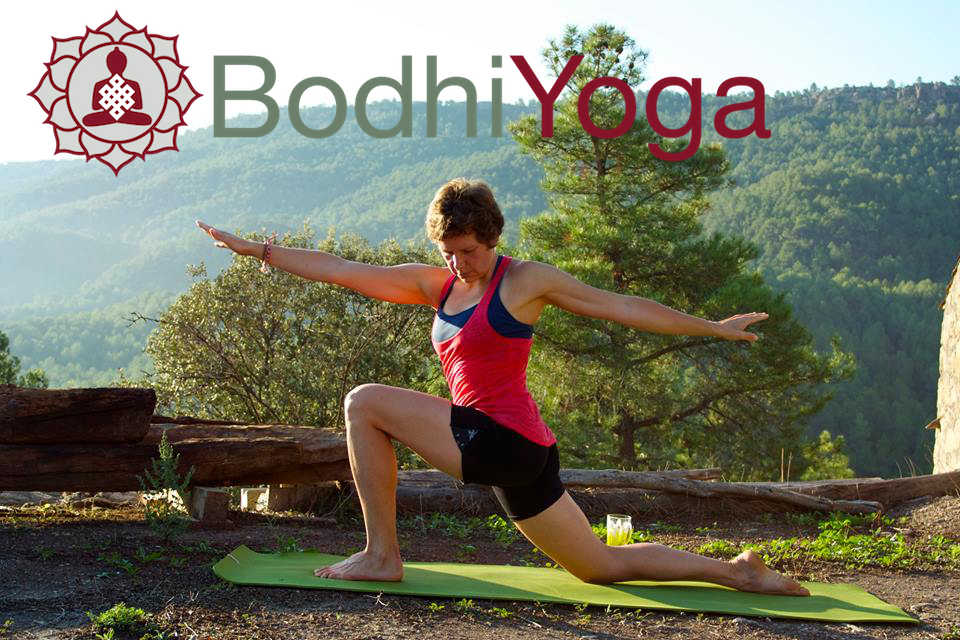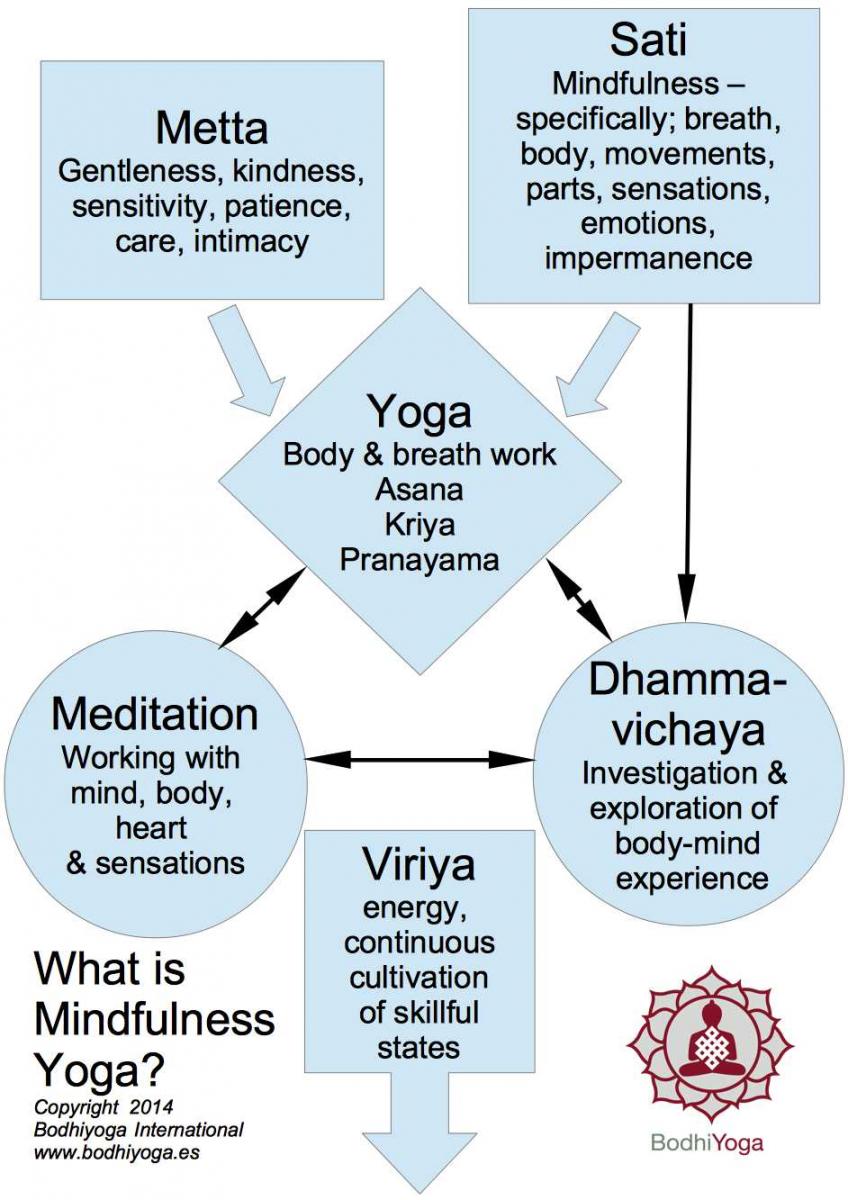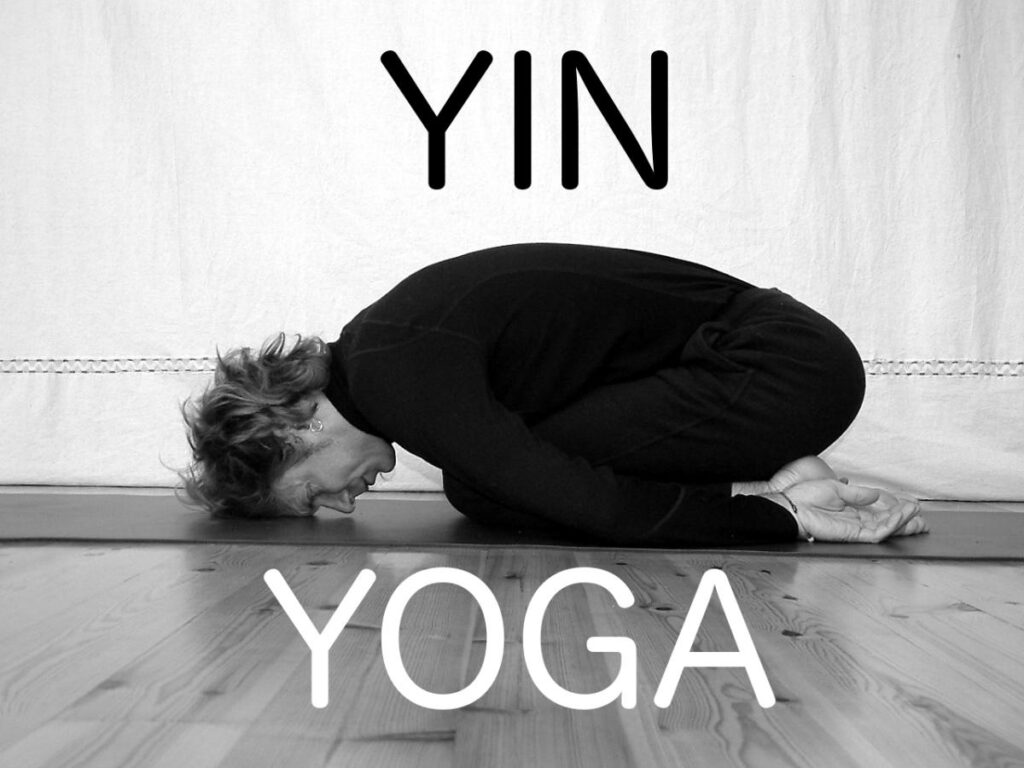
Recently, whilst running our last 200 hour Teacher Training in l’Artiga, one of our students asked “What is a Mindfulness Yoga?”
It was an interesting question, as we had been for almost three weeks working at the theme for nearly 10 hours a day;
Several classes a day led by myself or Sadhita: yoga, meditation, posture practice analysis, anatomy, video presentations, learning how to work in our meditation, teaching each other, spending precious time in the nature, studying, eating and living together……..
Having been reviewing the Satipatthana Sutta (a key text on the Buddhist Mindfulness teachings) over the last few years I have always wondered what the relevance of the fourth Satipatthana. Body (rupa), sensations (vedana) and heart-mind (citta) are obviously interesting from the view of developing awareness, so their presence seems more obvious in the Sutta.
The fourth category however is a collection of essential Buddhist teachings (dharmas), like the four noble truths, the hindrances, the sense bases and so on. It seems that this category helps us to clarify if our path is leading to or away from Awakening, to or from suffering (dukkha).
One of these lists is the seven “Wings to Awakening” or “Factors of Awakening” or Bodhyangas in Sanskrit. There it seemed was a clue to understanding the theoretical bases for Bodhiyoga’s Mindfulness Yoga.

From the perspective of everyday practice the first 3 or 4 Bodhyangas are useful and practically available to us through our day to day lives.
In our Yoga or Meditation practices (or indeed in our everyday moment to moment existence) we generate or cultivate, quite naturally in fact Mindfulness or Sati, the first bodhyanga. Mindfulness arises in relation with metta or loving kindness as awareness develops sensitivity and intimacy with that which we are mindful of.
On the basis of Mindfulness we begin to explore and sift through our experience naturally enough working out what actions of body, speech and mind lead to more expansive, creative states of being (skilful) and what leads to a more contracted state of suffering, “unskillful”. (this sifting process is described as “dharmavichaya” or Investigation of mental states). Clearly this is an art that can be worked on, that we can skill-up on!
Arising from this energy or “virya” develops. This bodhyanga is classically described by the four efforts of letting go and blocking unskilful states and developing and maintaining skilful states.
Then arises enthusiasm, pleasure or rapture as is described “priti”. Here we are up and running and really enjoying and engaging with our practice. The journey continues as this rapture calms into tranquility “prashabdhi”, refines into bliss and absorption “samadhi”, leading to the culmination of equanimity “upeksha”, which one of the many ways of describing the Awakening.
Equanimity, the capacity to abide in suffering and joy creatively in a non-reactive manner.
The diagram below from the previous blog entry is based on the teachings from the Satipatthana Sutta. Combining Yoga, and Meditation into the progressive development of consciousness as outlined by the seven “Wings of Awakening” “Bodhiyangas”.
So there you have it! A more technical explanation of the process of mindfulness yoga. If you wish to explore these teachings and practice with us at any level please look at our events listing for 2015 to the right.
All the best for the autumn months
Sudaka


 Recently, whilst running our last 200 hour Teacher Training in l’Artiga, one of our students asked “What is a Mindfulness Yoga?”
Recently, whilst running our last 200 hour Teacher Training in l’Artiga, one of our students asked “What is a Mindfulness Yoga?”


